Fix: The AC power adapter type cannot be determined
The “AC power adapter type cannot be determined” error indicates that the laptop is failing to recognize the connected power adapter, resulting in slower performance and battery charging issues. This can be caused by a faulty power adapter, a malfunctioning DC input jack, an incompatible adapter, or a communication error with the laptop’s power management system.
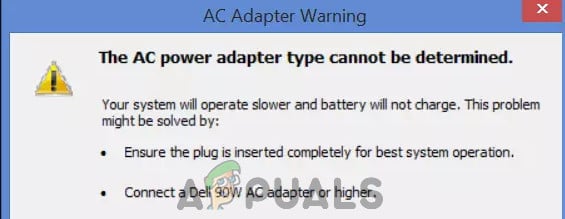
If your charger, previously working, suddenly shows this error, it could be due to the power connector being frequently knocked, causing the signal line circuit to fail. Temporarily wiggling the plug may help, but it can eventually stop working.
How to Check if Your Laptop Charger is Defective?
To diagnose the issue, follow these steps:
- Test your charger on a similar laptop.
- Use a similar charger on your laptop.
If your charger works on another laptop or the new charger shows the same error on your laptop, the problem likely lies with the DC charging port or the motherboard. Conversely, if a different charger works on your laptop or your charger exhibits the same error on another laptop, the charger itself is likely defective.
Below are the solutions to resolve these problems.
Solution 1: Power Cycle Your Laptop
If your PC’s charging system is unresponsive, fully discharging it might help.
- Unplug the charger, power off your laptop, and remove the battery.
Note: If your laptop has a non-removable battery, hold the power button for 10-15 seconds to ensure it powers off completely. - Hold the power button for 30 seconds.
- Reinsert the battery, plug in the charger, and reboot.
Note: If your laptop has a non-removable battery, ensure it is connected to the charger before rebooting. - Check if the issue is resolved.
Solution 2: Get a New AC Adapter/Charger
If your charger doesn’t work on a similar computer or a similar charger works on your laptop, it’s time to replace your AC adapter. If the charger previously functioned well, the issue might be loose soldering, a broken pin, fried capacitors, or a broken connection. If you’re comfortable repairing it, you can try changing cables, capacitors, or soldering. However, most chargers cannot be salvaged, so you will likely need to buy a new one.
When purchasing a new charger, make sure that:
- The wattage, voltage, and charging current (e.g., 65W, 19V, 1A) match those of your OEM charger to avoid errors.
- The connector type is the same to ensure it fits your laptop’s charging port. The length, diameter, and physical shape of the connectors are equally important, especially for models with proprietary connectors. Even small differences in connector dimensions can prevent the charger from fitting properly or establishing a secure connection.
This one is the most important one:
- Always check the specifications of your original charger to ensure the polarity (whether the center pin is positive or negative) matches exactly. Incorrect polarity, while not common, can be catastrophic and cause serious damage to your laptop.
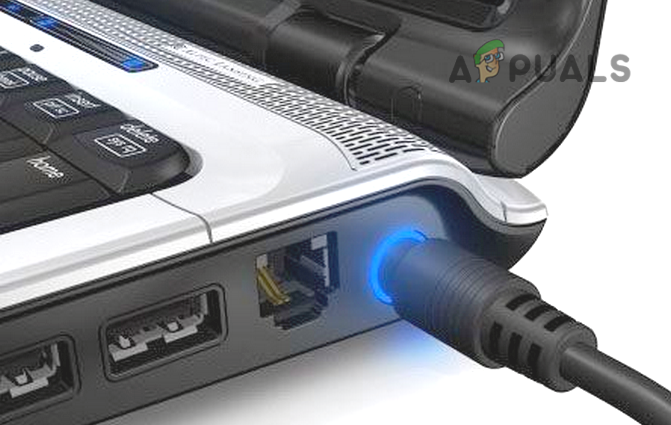
Warning: Using a charger that does not match these specifications can damage your laptop’s battery or power management system. Always double-check compatibility, and if in doubt, consult your laptop’s manual or manufacturer’s website.
Solution 3: Change Your DC Power Jack
Dell laptops often have fragile soldering and charging ports. I’ve repaired many and noticed that the soldering is prone to coming off, and DC charging ports frequently need replacing. If you need to wiggle the charger to get it to work, the DC charging port likely requires replacement. Repairing the port isn’t feasible because it often requires destroying it to reach the solders.
In some Inspiron models, the power board is separate from the motherboard and has a directly mounted power socket. You can open the laptop, unplug the old charging port, and replace it. Replacement ports are available on Amazon, eBay, or local shops and cost a few dollars. Ensure the part numbers (e.g., DD0R03PB000 or DD0VM9P000) match or verify wiring compatibility.
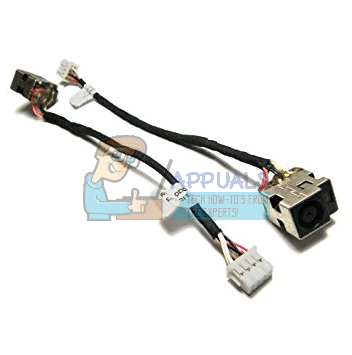
If your laptop’s DC input port is soldered to the motherboard, you’ll need to unsolder it and install a new one. If the issue persists, the motherboard may require replacement.
Warning: If you are not familiar with soldering or laptop disassembly, it is advisable to seek professional help to avoid damaging your device. If the issue persists, the motherboard may require replacement.
Note: Use a direct/external battery charger if you can’t identify the problem. If covered under warranty, contact the manufacturer for repair or replacement. Ensure your charger is plugged directly into an AC outlet, as power surge protectors can affect the power supply and cause errors.
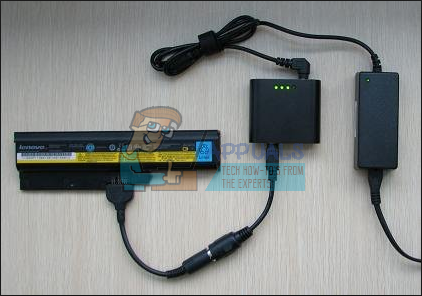
Workaround: Disable Power Warnings (Not Recommended)
If your computer charges normally but the warning persists, you can disable it permanently through the BIOS settings. Access the BIOS and turn off the power warnings.
Warning: Disabling the power warnings does not address the root cause of the issue. Continuing to use a malfunctioning power adapter can lead to more severe problems, such as damage to the laptop’s battery or motherboard. It is highly recommended to identify and rectify the actual problem to prevent costly repairs in the future.
- Restart your computer and enter the BIOS by pressing the DEL key or F2 according to the model of your computer.
- Once in BIOS, go to the Advanced tab and then toggle the option of Adapter Warnings. This option may be present in another tab as well.
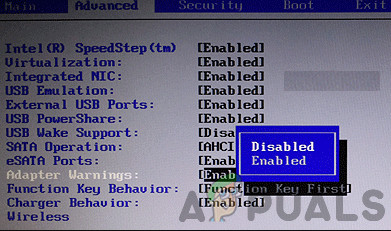
Disabling Adapter Warnings - Save changes and exit. Restart your computer, and the warning will disappear.